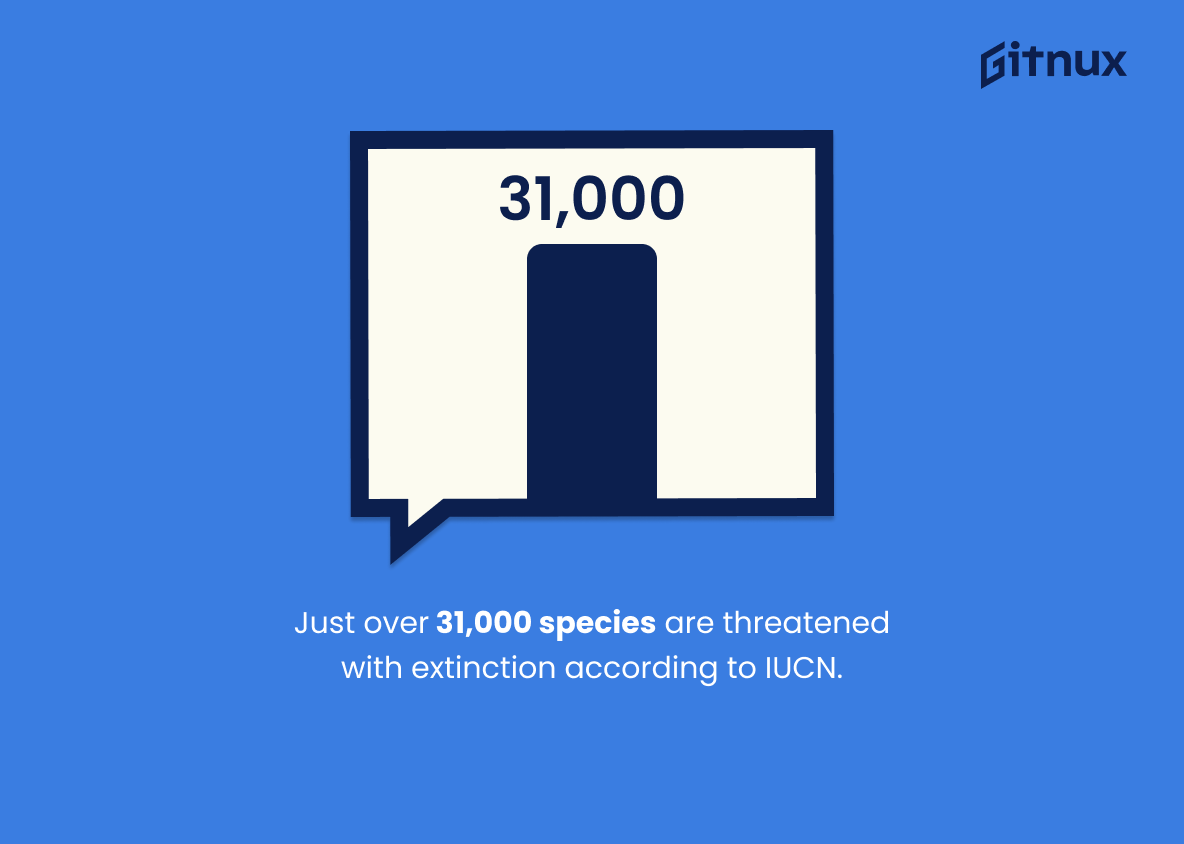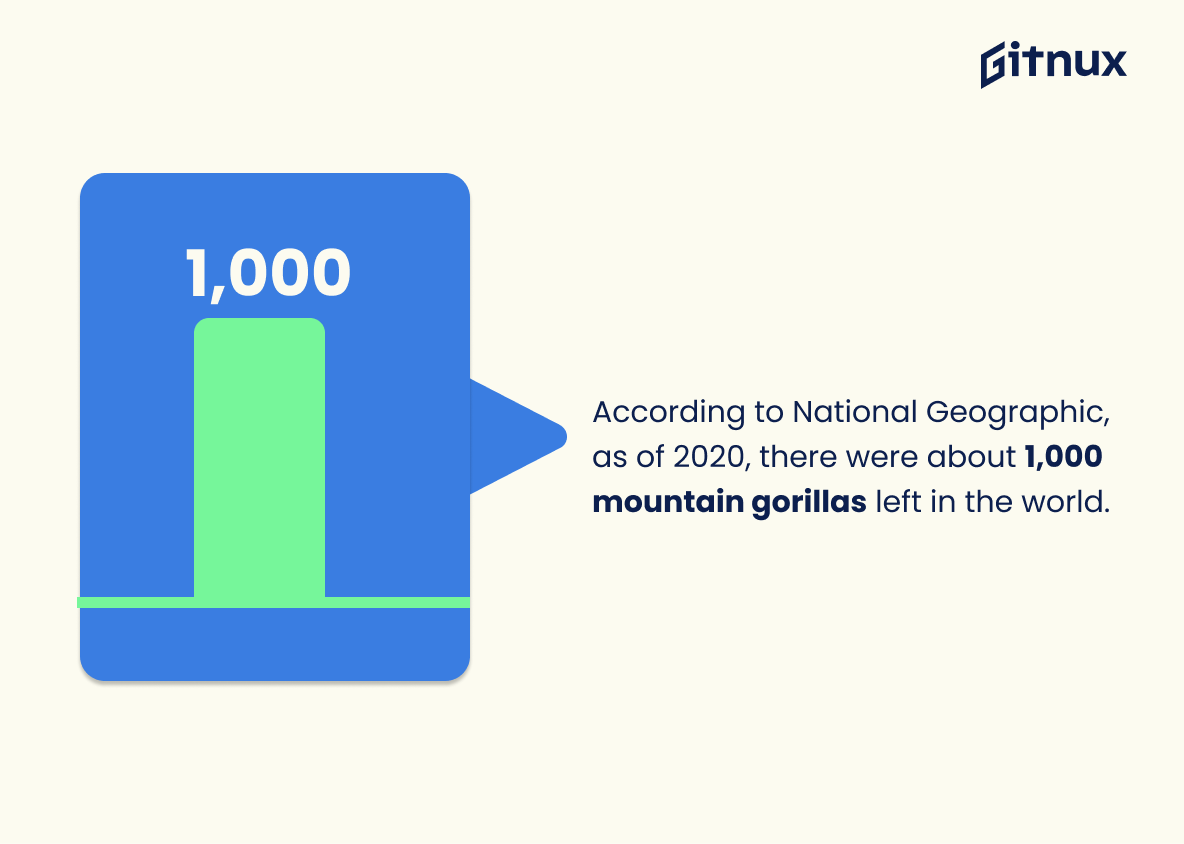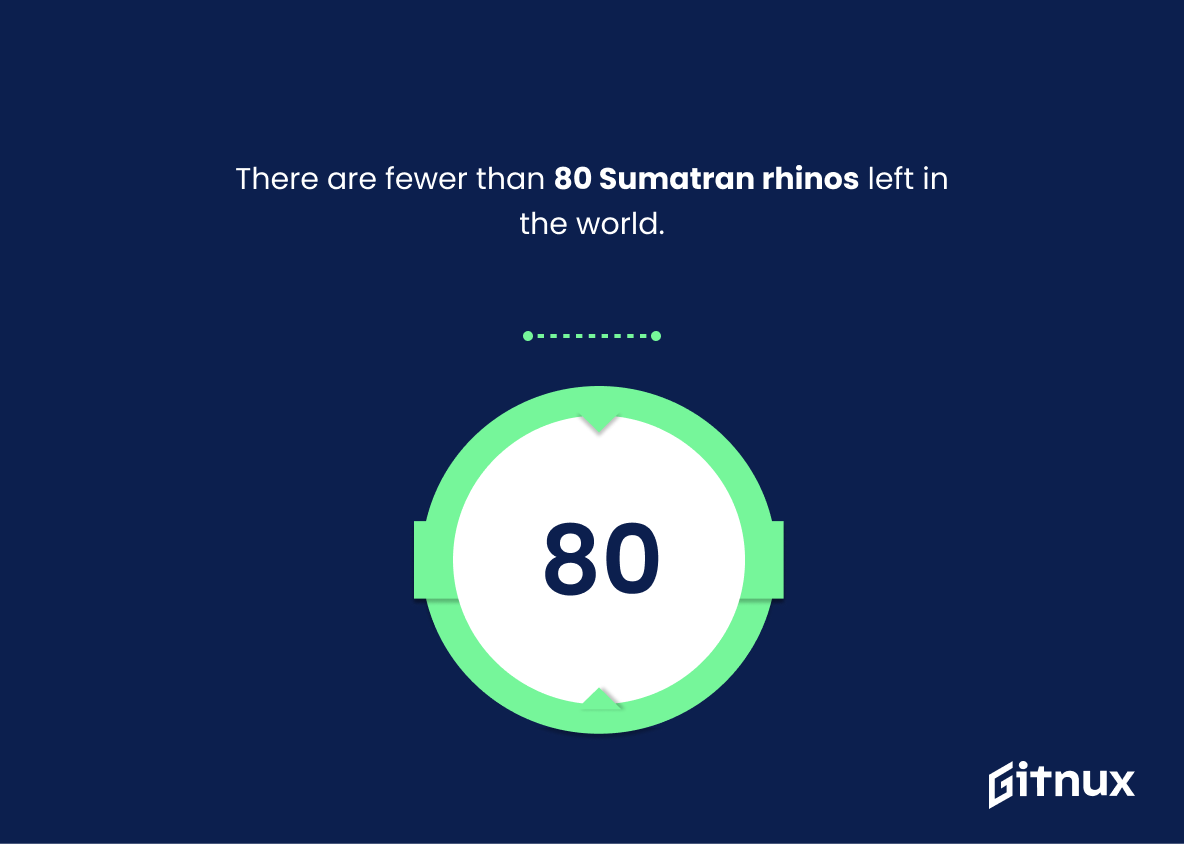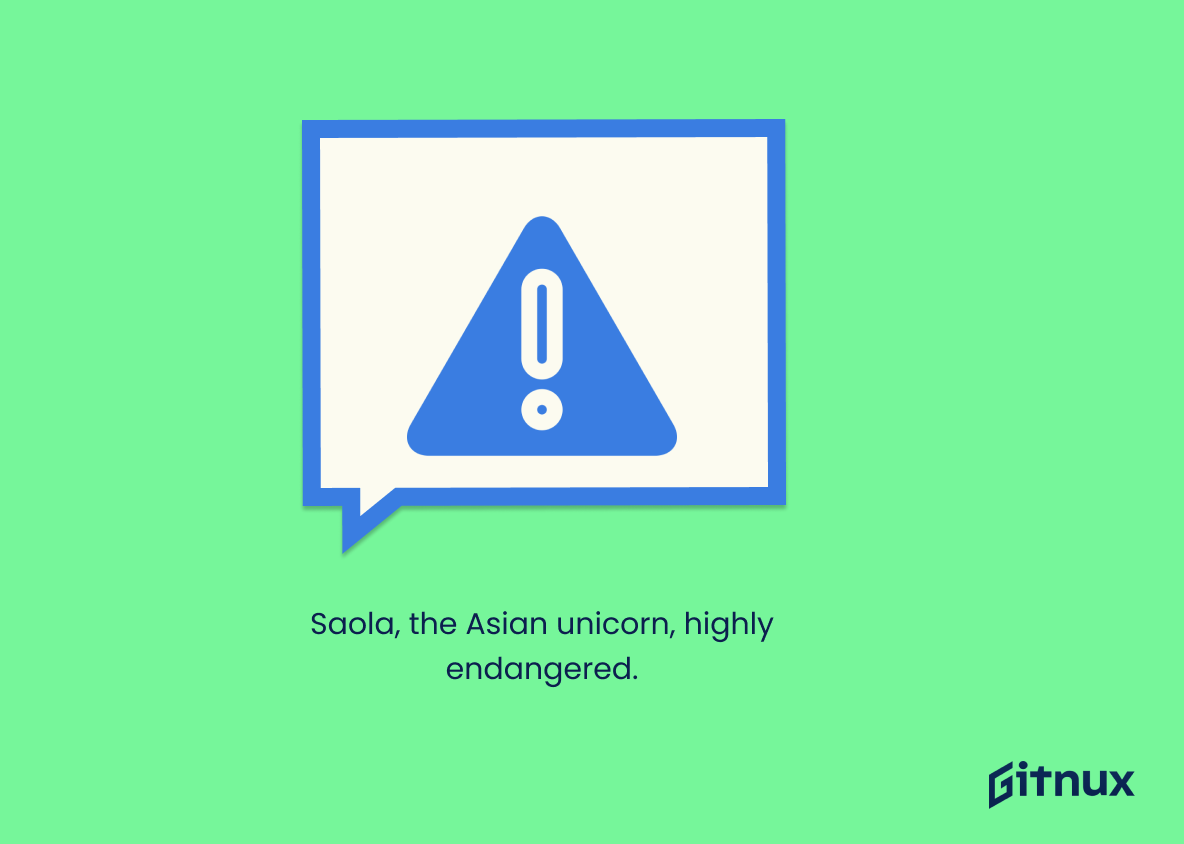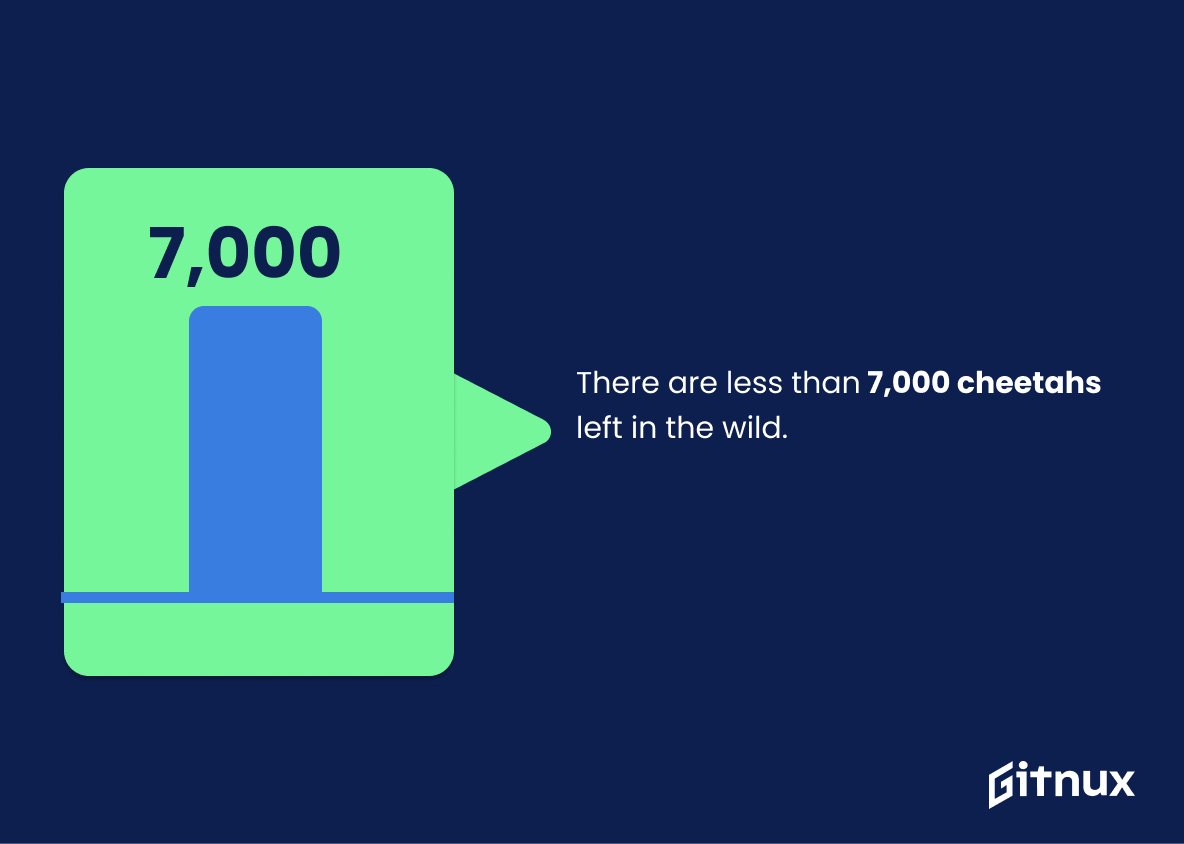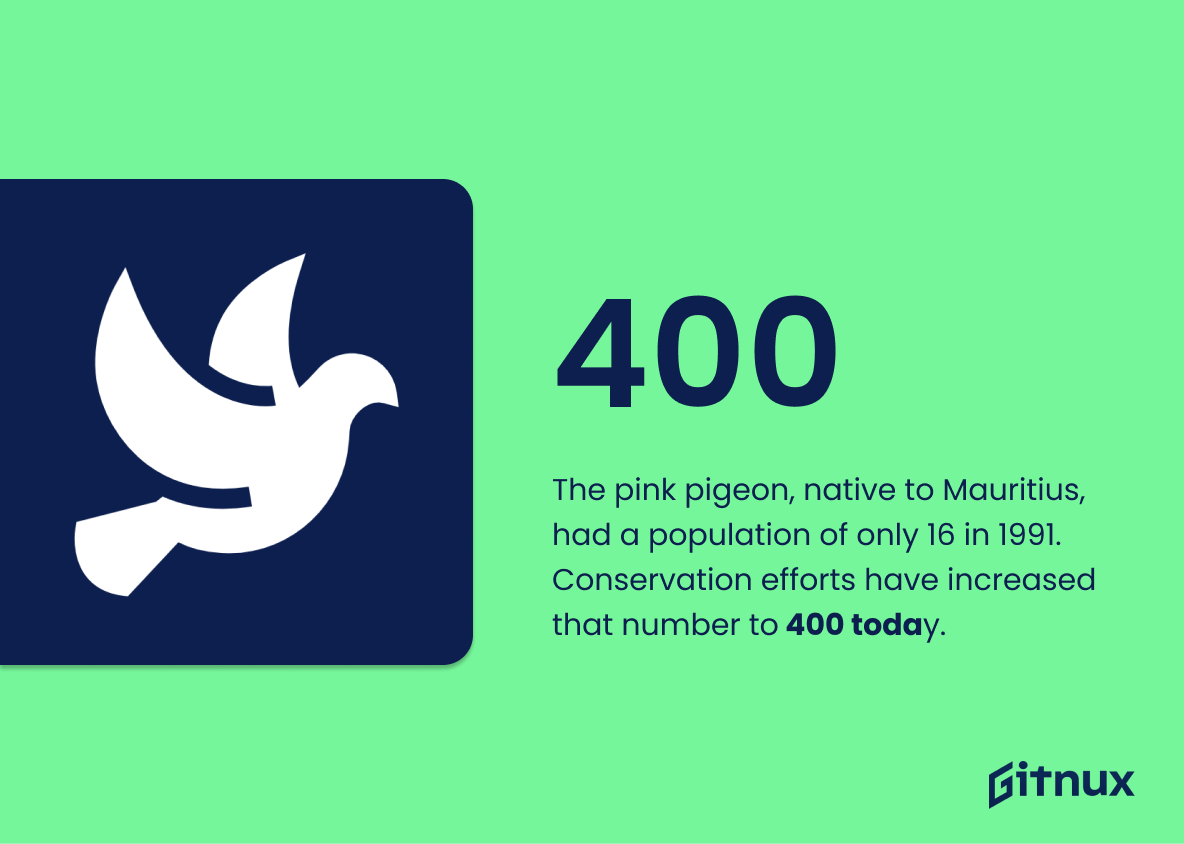Our planet is blessed with a rich tapestry of life in all forms, colors, and sizes. Yet, an alarming number of species are teetering on the brink of extinction, robbed of their natural habitats and struggling to survive. This blog post delves deep into the sobering world of endangered animals, offering important statistics that shed light on their plight. It serves as a stark reminder that our actions today will significantly shape the survival story of these precious beings. Not just data, these statistics represent urgent calls to action. So, come along on this journey as we explore the stark realities of endangered animals, quantified and presented to you in the form of critical statistics.
The Latest Endangered Animals Statistics Unveiled
The International Union for Conservation of Nature has estimated the total number of extinct species at 784.
Highlighting the alarming figure from the International Union for Conservation of Nature that sets the total number of extinct species at 784, underscores the gravity of the situation we find ourselves in. It is an undeniable call-to-action that punctuates the narrative of our blog post about Endangered Animals Statistics. It crystalizes the urgency to innovate and initiate stronger conservation efforts, thereby fostering a deeper comprehension and emotional connection with the audience to this pressing environmental issue. The mention of this statistic also aids in contextualizing the scope of the problem, serving as a stark reminder of the devastating consequences of human neglect and ignorance towards Mother Nature’s inhabitants.
Just over 31,000 species are threatened with extinction according to IUCN.
The grim tally of over 31,000 species teetering on the brink of oblivion, as per IUCN’s data, underscores the urgency of the narrative on endangered animal statistics. It paints an unmistakable portrait of a natural world in crisis, a silent alarm bell ringing, echoing the shocking reality of the earth’s biodiversity at dire risk. Each digit in this statistic isn’t just a number, but a representation of unique species’ existence hanging in the balance, a powerful call-to-action to safeguard our earth’s critically endangered biological heritage.
The Sumatran elephant population has decreased by 80% in just 25 years.
Unveiling the startling statistic of an 80% plummet in the Sumatran elephant population in just a mere 25 years fuels a poignant narrative about endangerment within the animal kingdom. Stakeholders in the fight for animal conservation may see in this statistic a red alarm in the night – a palpable testament to the urgency of their mission. By contrasting the harsh reality encapsulated within the numbers, readers of the blog post are invited to understand at a deeper level the precious balance of the ecosystem and the dire consequences when that equilibrium is disrupted. Indeed, each percentage point marks the loss of unique lives and a blow to the biodiversity that our world desperately needs to thrive. Witnessing this decline serves as a powerful reminder that our actions can have a profound and lasting impact on the natural world.
According to National Geographic, as of 2020, there were about 1,000 mountain gorillas left in the world.
Contemplating the striking figure from National Geographic, which posits that a mere 1,000 mountain gorillas existed globally as of 2020, one can’t help but feel an urgent sense of concern regarding the state of endangered animals. This statistic serves as an alarming call to action, drawing readers’ attention to the critical state of the world’s biodiversity. With such a minimal number of these majestic creatures remaining, the plight of the mountain gorillas becomes a poignant allegory for the wider threat posed to numerous species worldwide. This revelation helps render the abstract threat of global species extinction dramatically tangible, fueling the pertinence of our discussions on endangered animal statistics, and underscoring the need for immediate conservation efforts.
There are fewer than 80 Sumatran rhinos left in the world.
A glimpse into the fragile state of our planet’s biodiversity is offered by the stark reality that less than 80 Sumatran rhinos remain in the world. This number serves as a cautionary tale within the narrative of Endangered Animals Statistics. It not only spotlights the precarious status of these precious behemoths but also underscores the urgent need for conservation efforts. It is the numeric testament to a lamentable tale of decline, inviting readers to acknowledge the critical crossroads at which we find ourselves. It challenges us, asking if we stand by as silent spectators or become agents of change and work towards restoring Earth’s beautifully varied texture of life.
The WWF estimates that there are 3,900 tigers left in the world.
Imagine the once-thriving population of tigers, a symbol of majestic beauty and power now encapsulated in the heart-wrenching figure of 3,900, as estimated by the WWF. This single number holds the story of the escalating threats shadowing our biodiversity. In the grand mosaic of a blog post about Endangered Animals Statistics, this paints a vivid picture not only of the perilous state of tigers but also bellows an urgent call. It beseeches us to comprehend the severity of the situation and catalyze our conservation efforts, so these magnificent creatures do not simply become another tale of our hindsight. The dwindling number promises a dire future, and each subtraction from this number echos a loss in the harmonious symphony of life on Earth. Such a statistic should not be viewed just as a digit, but as a poignant reminder to safeguard the declining majesty of the tiger and other endangered species.
The saola, also known as the Asian unicorn, is rarely seen and is one of the most critically endangered large mammals in the world.
Highlighting the precarious plight of the saola, or Asian unicorn, delivers a potent message about our world’s critically endangered species status. Examining numbers on paper alone does not always evoke an emotional connection. However, mentioning a creature as mystical and astonishingly rare as an Asian unicorn compels readers to grasp the more abstract, alarming reality of biodiversity loss. This statistic underscores the stark irony — such wondrous creatures are on the brink of extinction, largely unseen by the human eye. It simultaneously adds gravity and urgency to the endangered animals conversation within the post, giving readers a vivid picture of the urgent need for conservation efforts.
Fewer than 25,000 blue whales exist today.
Highlighting the sobering fact that less than 25,000 blue whales grace our oceans today, offers a vivid illustration of the precarious position that these majestic creatures find themselves in. This number, when presented in a blog post about Endangered Animals Statistics, amplifies the urgent call for conservation actions. More than just a statistic, it encapsulates a critical and urgent narrative of loss and the ongoing struggle of a species against extinction. It is meant to provoke thought, promote discussion and inspire action among the readership, driving them to recognize the importance of biodiversity and the role they play in its preservation.
There are less than 7,000 cheetahs left in the wild.
Highlighting the hauntingly low number of less than 7,000 cheetahs left in the wild sets a vivid image into the minds of our readers. It acts as a loud shout in the silent room, drawing attention towards the urgency of their alarming drop in population. This stark figure illustrates the critical situation of this iconic, fast-paced species, and presents a real-time evidence of the looming extinction threat. It encourages readers to ponder upon the grave effects of human activities, environment changes and loss of biodiversity. This number serves as a call to action for our society, conservationist and readers alike, to change our ways, save habitats and legislate stricter wildlife protection laws. This raw, hard-hitting number is not just a statistic, but a heart-wrenching reminder of our obligation to protect and preserve our planet’s incredible wildlife for future generations.
Only about 2,200 Ganges river dolphins still exist.
Merging into the aquatic realm of the endangered animals’ statistics, an incredibly stark number jumps out. Merely 2,200 Ganges river dolphins are navigating the mighty waterways of our planet as we speak. Imagine a high school filled with around 2,200 students; that’s humanity’s entire quota of Ganges river dolphins.
Every dolphin in this small population holds a thread of the immense biodiversity tapestry that covers our planet like the most intricate artwork. Losing even a fraction of them would equal lines in this tapestry eroding. Furthermore, these dolphins serve as watchdogs of the river health, with their dwindling numbers mirroring the severe ecological deterioration. In this intricate ecosystem dance, the vanishing waltz of the Ganges river dolphins underscores the critical urgency and undeniably justifies our relentless conservation efforts.
Thus, in the unfolding narrative about endangered animals, the tale of these 2,200 swimmers is not just another statistic. It’s a loud alarm bell reminding us all of the pressing duty we have towards maintaining the biological wealth of our planet.
Fewer than 1,000 Amur leopards left in the wild according to WWF.
Highlighting the grim count of less than 1,000 Amur Leopards left in the wild plants a dire seed of urgency for readers of the blog post on Endangered Animals Statistics. This stark figure refracts a chilling truth about the brink of extinction this species faces, infusing the post with poignant realism about the rapidity of species decline. It paints a vivid portrait of the silent yet swift diminishment of biodiversity, serving as an urgent alarm reminding us of the precarious thread by which such wondrous creatures are hanging.
The pink pigeon, native to Mauritius, had a population of only 16 in 1991. Conservation efforts have increased that number to 400 today.
The tale of the pink pigeon serves as an uplifting beacon of hope in the narrative of endangered animal statistics. The trajectory from a mere 16 individuals in 1991 to 400 today quantifies in concrete terms the transformative potential of dedicated conservation efforts. This change is not only a resounding victory for the pink pigeon itself, but also a powerful testament to the possibilities for other endangered species when we humans step up to our responsibilities. It disruptively challenges the otherwise grim statistics and stakes a claim for optimism, instilling in the readers a sense of urgency, capability and hope for positive change.
There are only 1,816 giant pandas left in the wild according to WWF.
The revelation that a meager total of 1,816 giant pandas roam freely in the wild underscores the alarming urgency of the matter. It isn’t merely a statistic, but rather serves as a profound testament to the dire situation faced by endangered species worldwide. This particular figure, a glaring call for action, paints a gripping narrative of survival as we delve into the realm of endangered animal statistics. A symbol of emblematic appeal and international diplomacy – the Giant Panda – stands teetering on the brink of extinction: each number whispers a tale of habitat loss, poaching, and a world struggling to rectify its ecological imbalances. This poignant piece of data deepens our understanding and underlines the gravity of threatened biodiversity, playing an integral role in galvanizing global conservation efforts.
60% of primate species are threatened with extinction according to Conservation International.
The shocking truth that Conservation International’s data reveals – that a staggering 60% of primate species are teetering on the brink of extinction – casts a dark shadow over our planet’s biodiversity. In the spirit of a blog post centered around endangered animal statistics, this alarming percentage not only underlines the urgency in addressing the battle for survival but also further emphasizes the fragile balance in our ecosystem.
This statistic stands as a harsh reality check, akin to a canary in a coal mine, warning us about the dire circumstances and the potential collapse of our biodiversity. It underscores the notion that the destiny of endearing primate species, our closest cousins in the animal kingdom, is on thin ice and it is now time for stark action, not just stark numbers.
Moreover, understanding the grim truth behind this statistic could ignite passion and trigger conservation initiatives among readers. They say numbers don’t lie, and this stark figure of 60% of primate species nearing extinction goes beyond mere digits – it’s an outcry from nature itself, urging us to transform our engagement with the world’s fauna or face a future where they exist only in bedtime stories and old nature documentaries.
Only around 2,000 Philippine eagles exist today.
Highlighting the stark figure of approximately 2,000 remaining Philippine eagles in our blog post underscores the precarious survival of these majestic predators. This number serves as a pulse check, a barometer of humanity’s environmental stewardship. It’s a silent alarm drawing attention to the urgent need for conservation measures, pinpointing the devastating reality of extinction happening right under our noses. With every lost Philippine eagle, the rich biodiversity tapestry unravels a bit more, reiterated by this hard-hitting statistic. Our post aims to galvanize readers into action, emphasizing that now is the time to step up for these exquisite birds, before the numbers dwindle further, signaling we’ve run out of chances.
There are less than 60 Javan rhinos left in the world.
In the grand tapestry of a blog post about Endangered Animals Statistics, the poignant statistic of there being under 60 Javan rhinos left in the world serves as a tragic centerpiece amid others. The dramatically low number echoes the urgency of the situation, an alarming reality-check that grabs our attention. It strums the emotional chords of the readers, highlighting the devastating rate of depletion of this majestic species, and provoking immediate introspection about environmental concerns and conservation practices. This singular statistic explicates the dire state of biodiversity, helping readers grasp the severity of the issue in numerical terms. Furthermore, it inspires action, motivating audiences to take strides towards conserving endangered species and rectifying the missteps leading us down this tragic path.
More than half of the world’s turtle and tortoise species are now threatened with extinction, according to a paper by scientists from the International Union for Conservation of Nature.
Highlighting the perilous plight of our planet’s turtle and tortoise species provides a stark illustration of the escalating extinction crisis stirring in our natural world. This potent piece of statistic, delivered by the scientists from the venerable International Union for Conservation of Nature, unveils a truth we must face about our role in their endangerment. When folded into a blog post on endangered animals statistics, it adds depth, drawing readers’ attention to a rarely spotlighted part of our ecosystem. It’s a compelling call to action, a desperate plea for awareness and commitment to conservation efforts, bearing testament to the urgent need for change in our attitudes and behaviors towards our cohabitants on Earth.
There are less than 30 vaquita porpoises left in the world.
The dwindling tally of 30 vaquita porpoises left in the world violently shakes the very pillars of biodiversity and ecology. This alarming numeric testament shines a harsh spotlight on the grim reality of endangered animals’ statistics – pulling at the heartstrings and mirroring humanity’s sometimes reckless role in biodiversity tapestry disruption. In our blog post, we wield this statistic not only as a caution signpost but as a clarion call for urgent action. Resonating from the poignant tale of these miniature porpoises, it serves as a stark reminder of the dire consequences of indifference and complacency, setting the tone for our blog post and inciting readers to reflect and engage in conservation endeavors.
There are less than 10,000 red pandas left in the wild.
Placing this chilling number at the forefront, the plight of less than 10,000 red pandas evokes a stark image in our minds. As we discuss endangered animals statistics for a blog post, it serves as a glaring alarm bell, urgently highlighting the plight these vibrant creatures are facing in the wild. This sobering reality jolts us out of complacency, reinforcing the urgent need for conservation measures. Drawing attention to the rapidly shrinking red panda population stands as a potent symbol of the predicament many other endangered species are embroiled in, adding depth and meaningful context to our conversation about wildlife extinction. Highlighting the red pandas’ situation significantly elevates awareness and encourages a proactive attitude towards conservation in our readership.
Conclusion
Our exploration into endangered animals statistics serves as a stark reminder of the fragility of our ecosystem and the indispensable role we play in its preservation. Each loss of a species creates an imbalance that could trigger undesirable ripple effects. As responsible inhabitants of this planet, the onus is on us to encourage sustainable living, endorse conservation projects, and disseminate this vital information for the benefit of all species, including ourselves. Shedding light on these alarming numbers should incentivize us to foster an environment where every creature can thrive. After all, a planet rich in biodiversity is not just visually pleasing, but it’s also necessary for ecological balance and continuity. It’s high time we prioritize the protection of endangered species and their habitats – our survival and theirs are intertwined.
References
0. – https://www.www.panda.org
1. – https://www.www.iucnredlist.org
2. – https://www.www.nytimes.com
3. – https://www.www.worldwildlife.org
4. – https://www.www.nationalgeographic.com
5. – https://www.www.conservation.org
6. – https://www.www.wwf.org.uk
7. – https://www.www.birdlife.org

